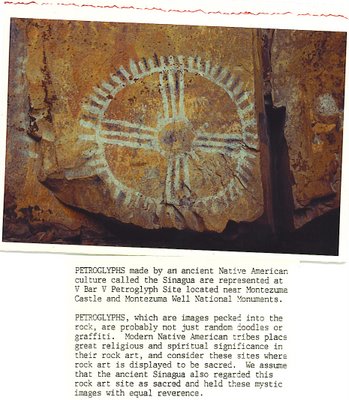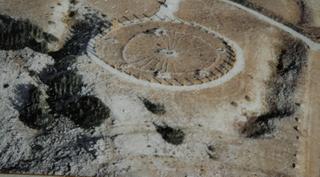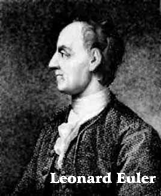Grossmann is getting his doctorate on a topic that is connected with non-Euclidean geometry. I don’t know what it is.
Einstein to Mileva Maric,1902
Animal Navigation The long-distance navigational abilities of animals have fascinated humans for centuries and challenged scientists for decades. How is a butterfly with a brain weighing less than 0.02 grams able to find its way to a very specific wintering site thousands of kilometers away, even though it has never been there before? And, how does a migratory bird circumnavigate the globe with a precision unobtainable by human navigators before the emergence of GPS satellites? To answer these questions, multi-disciplinary approaches are needed. A very good example of such an approach on shorter distance navigation is the classical ongoing studies on foraging trips of Cataglyphis desert ants. My Nachwuchsgruppe intends to use mathematical modelling, physics, quantum chemistry, molecular biology, neurobiology, computer simulations and newly developed laboratory equipment in combination with behavioral experiments and analyses of field data to achieve a better understanding of the behavioral and physiological mechanisms of long distance navigation in insects and birds.
Tony Smith has some interesting information in response to a post by Clifford of Asymptotia.
Clifford writes:
This is simply fascinating. I heard about it on NPR. While it is well known that birds are sensitive to the earth’s magnetic field, and use it to navigate, apparently it’s only been recently shown that this sensitivity is connected directly to the visual system (at least in some birds). The idea seems to be that the bird has evolved a mechanism for essentially seeing the magnetic field, presumably in the sense that magnetic information is encoded in the visual field and mapped to the brain along with the usual visual data
While my post has been insulted by cutting it short(and stamping it and proclaiming irrelevance,) I'd like to think otherwise, even in face of his streamlining that Clifford likes to do. His blog, he can do what he wants of course.
In any case, it seems reasonable to agree with Buhler, who concludes in his biography of Gauss that "the oft-told story according to which Gauss wanted to decide the question [of whether space is perfectly Euclidean] by measuring a particularly large triangle is, as far as we know, a myth."
So I'll repeat the post of mine here and the part, that he has deleted. You had to know how to see the relevance of the proposition of birds in relation to the magnetic field of the earth, to know why the bird relation is so important.
On Magnetic visionRupert Sheldrake has had similar thoughts on this topic.
"Numerous experiments on homing have already been carried out with pigeons. Nevertheless, after nearly a century of dedicated but frustrating research, no one knows how pigeons home, and all attempts to explain their navigational ability in terms of known senses and physical forces have so far proved unsuccessful. Researchers in this field readily admit the problem. 'The amazing flexibility of homing and migrating birds has been a puzzle for years. Remove cue after cue, and yet animals still retain some backup strategy for establishing flight direction.' 'The problem of navigation remains essentially unsolved.'
Many of academics might have steered clear because of the the thoughts and subject he has about this? It seems to me that if this information is credible, then some of Rupert's work has some substance to it and hence, brings some credibility to the academic outlook?
Update: Here I am adding some thoughts in regards to Rupert Sheldrake that I was having while reading his work. He had basically himself denounced the process of birds having an physiological connection to magnetic fields because of not having any information to support the magnetic vision Clifford is talking about. So Rupert moves beyond this speculation, to create an idea about what he calls Morphic resonance with regards to animals.
So Rupert presents future data and theoretics in face of what we now know in terms of the neurological basis is experimentally being talked about in the article in question Clifford is writing about.
On How to see in the Non Euclidean Geometrical World8.6 On Gauss's Mountains
One of the most famous stories about Gauss depicts him measuring the angles of the great triangle formed by the mountain peaks of Hohenhagen, Inselberg, and Brocken for evidence that the geometry of space is non-Euclidean. It's certainly true that Gauss acquired geodetic survey data during his ten-year involvement in mapping the Kingdom of Hanover during the years from 1818 to 1832, and this data included some large "test triangles", notably the one connecting the those three mountain peaks, which could be used to check for accumulated errors in the smaller triangles. It's also true that Gauss understood how the intrinsic curvature of the Earth's surface would theoretically result in slight discrepancies when fitting the smaller triangles inside the larger triangles, although in practice this effect is negligible, because the Earth's curvature is so slight relative to even the largest triangles that can be visually measured on the surface. Still, Gauss computed the magnitude of this effect for the large test triangles because, as he wrote to Olbers, "the honor of science demands that one understand the nature of this inequality clearly". (The government officials who commissioned Gauss to perform the survey might have recalled Napoleon's remark that Laplace as head of the Department of the Interior had "brought the theory of the infinitely small to administration".) It is sometimes said that the "inequality" which Gauss had in mind was the possible curvature of space itself, but taken in context it seems he was referring to the curvature of the Earth's surface.
See:Reflections on RelativityAs a layperson, Riemann and Gauss were instrumental for helping me see beyond what we were accustom to in Euclidean, so I find Clifford's blog post extremely interesting as well. Maybe even a biological/physiological impute into our senses as well? Who knows?:)
Einstein's youth and the compass, becomes the motivation that drives the vision of what exists beyond what was acceptable in that youth. The mystery. Creates a new method on how we view the world beyond the magnetic, to help us include the view in the gravitational one as well.
From a early age, young Albert showed great interest in the world around him. When he was five years old, his father gave him a compass, and the child was enchanted by the device and intrigued by the fact the needle followed a invisible field to point always in the direction of the north pole.Reminiscing in old age, Einstein mentioned this incident as one of the factors that perhaps motivated him years later to study the gravitational field. God's Equation, by Amir D. Aczel, Pg 14
While something could exist that is abstract, like for instance the Gaussian arc, this inclusion in the value of general relativity is well known. Mileva's response in quote above was the key for Einstein's views on developing General Relativity, and without it "electromagnetism would not, and could not" have been included geometrically in the theory of GR.
It was a succession to "Gravitational wave production" that was understood in regards to Taylor and Hulse.

The theory of relativity predicts that, as it orbits the Sun, Mercury does not exactly retrace the same path each time, but rather swings around over time. We say therefore that the perihelion -- the point on its orbit when Mercury is closest to the Sun -- advances.
I would think this penduum exercise would make a deeper impression if held in concert with the way one might have look at Mercuries orbit.
Or, binary pulsar
PSR 1913+16 of Taylor and Hulse. These are macroscopic valutions in what the pendulum means. Would this not be true?
See:
Harmonic OscillationI guess not every string theorist would know this? Maybe even Bee would understand that "German" is replace by another form of seeing using abstract language, for how everything can be seen in relation to the ground state? Where there are no gravitational waves, spacetime is flat.
You had to know how such views on the navigation of the birds could have a direct link to the evolutionary output of the biology and physiology of the species. What Toposense?
Yes it's a process where the mathematical minds look at knitting and such, in such modularc forms, to have said, "hey there is a space of thinking" that we can do really fancy twists and such.
One thing us humans can certainly do is construct the monumental world reality with straight lines and such in the Euclidean view. But nature was there before we thought to change all it's curves.
 But the truth is, the Earth's topography is highly variable with mountains, valleys, plains, and deep ocean trenches. As a consequence of this variable topography, the density of Earth's surface varies. These fluctuations in density cause slight variations in the gravity field, which, remarkably, GRACE can detect from space.
But the truth is, the Earth's topography is highly variable with mountains, valleys, plains, and deep ocean trenches. As a consequence of this variable topography, the density of Earth's surface varies. These fluctuations in density cause slight variations in the gravity field, which, remarkably, GRACE can detect from space. See:
The Mind FieldSee
here for more info on Grace.
Look out into the wild world that nature itself presents and tell me what the ancient mind did not see. Native Americans lived closer to nature. Hopefully you'll understand why it is we must engage ourselves to experiencing the views of nature?:)
Mandalic Construction See
See:
The Last MimzyThe "Ancient Medicine wheels" might have been place accordingly? Do you imagine seeing in the abstract world, the magnetic view we see of earth in it's different disguise?
So that last line about the "medicine wheels" probably caused Clifford to do what he did in regards to the post I wrote.
Yes I am creating a direct link between the Medicine Wheels and the Medicine Wheel as a Mandala constructed by early Native Americans. Where they were shamanically placed on the earth.
 What is a Medicine Wheel?
What is a Medicine Wheel?
The term "medicine wheel" was first applied to the Big Horn Medicine Wheel in Wyoming, the most southern one known. That site consists of a central cairn or rock pile surrounded by a circle of stone; lines of cobbles link the central cairn and the surrounding circle. The whole structure looks rather like a wagon wheel lain-out on the ground with the central cairn forming the hub, the radiating cobble lines the spokes, and the surrounding circle the rim. The "medicine" part of the name implies that it was of religious significance to Native peoples.

Figure 4 - Distribution of medicine wheel sites east of the RockiesWhat was of importance is the underlying psychological patterns that exist in the forms of Mandalas. That such a thing like the Medicine wheel, would retain a impact from one's life, to another life.
 There are various forms of mandalas with distinct concepts and different purposes. The individual representations range from the so-called Cosmic Mandalas, which transmit the ancient knowledge of the development of the universe and the world-systems which represents a high point among Mandalas dedicated to meditation; to the Mandalas of the Medicine Buddha which demonstrates how the Buddha-power radiates in all directions, portraying the healing power of the Buddha.
There are various forms of mandalas with distinct concepts and different purposes. The individual representations range from the so-called Cosmic Mandalas, which transmit the ancient knowledge of the development of the universe and the world-systems which represents a high point among Mandalas dedicated to meditation; to the Mandalas of the Medicine Buddha which demonstrates how the Buddha-power radiates in all directions, portraying the healing power of the Buddha. It would not be easy to understand this "seed mandala" as it makes it way into conscious recognition. It arises to awareness through the subconscious pathway during our susceptibility in dream time. This open accessibility is the understanding that there is a closer connection to the universality of being, and the realization that the degrees beyond the "emotive body" is developing the understanding of the "mental one" as well as, leading to "the spiritual one."
This comparative view is analogousness to development beyond the abstract view we see of earth in it's gravitational form.
However, the signals that scientists hope to measure with LISA and other gravitational wave detectors are best described as "sounds." If we could hear them, here are some of the possible sounds of a gravitational wave generated by the movement of a small body inspiralling into a black hole.
It would be much like a "energy packet" that would contain all that is demonstrated in "extravagant patterns." Look like a "flower in real life," or a "intricate pattern," while encouraging the person to explore these doorways and move on from.
That seed contains all of the history we have supplanted to it by how we built previously and embedded all the philosophy we had learnt from it.
The Emotional Body of the EarthWould to me seem very emotive in terms of it's weather. How such weather patterns spread across the earth. Also, it would not seem so strange then that while we would have seen polarization aspects in the cosmos, in terms of magnetic field variances in relation to north and south, we would see "this of value" in the earth as well?
So would the earth have it's positive and negative developments in relation to aspect of it's weather? Most certainly psychological when the snows have lasted so long, one could indeed wish for warmer weather, but that's not what I mean. I mean on a physiological level, such ionic generations would indeed cause the state of the human body to react.



























